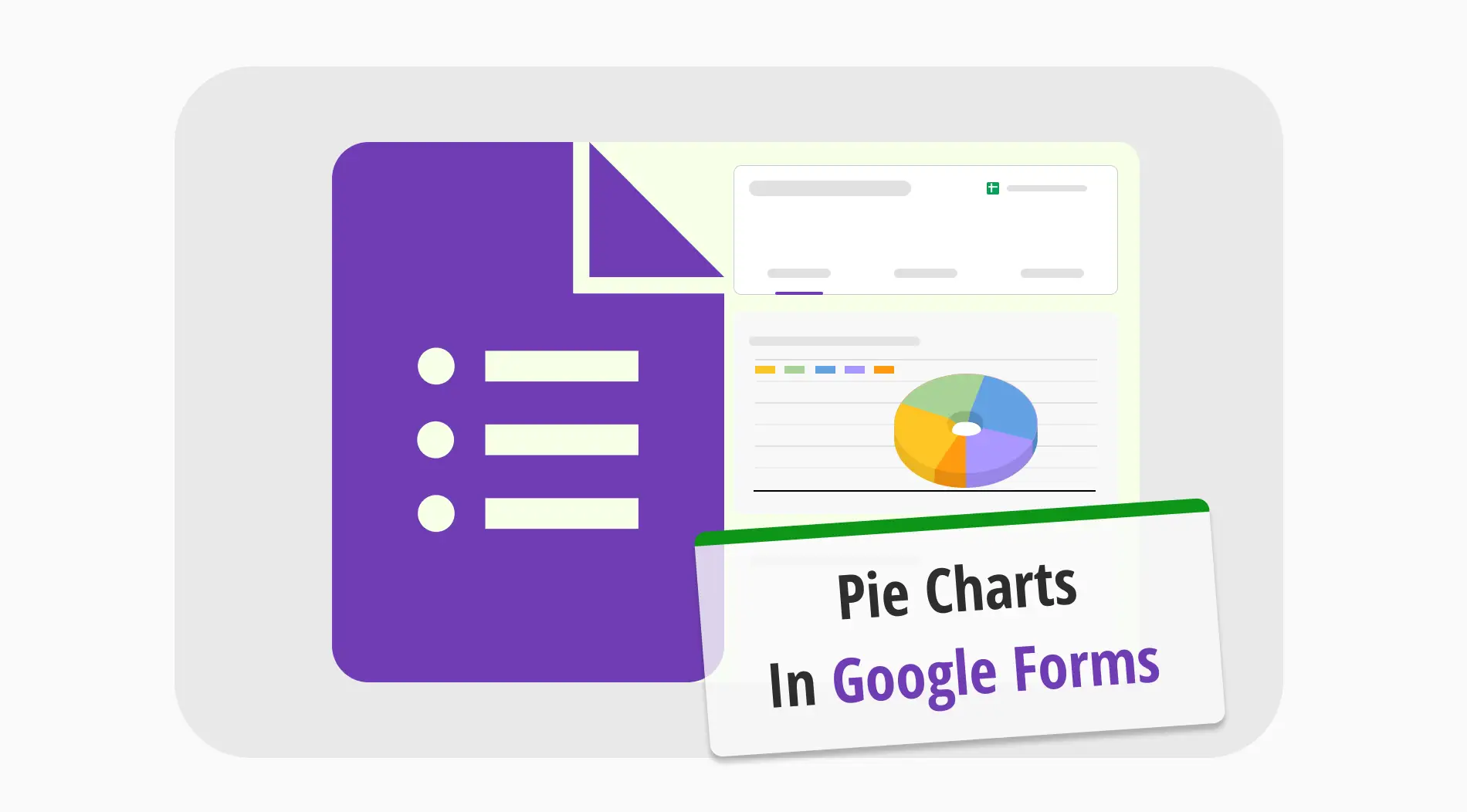
Data analysis is the key to creating a successful business and ensuring its progress. It is safe to say that not only businesses but most of our world runs on data and its analysis. Therefore, it is extremely important to know how to create and analyze data charts, and one of the most infallible ways to do this is using a Google Forms pie chart.
In this article, you will learn how to make a pie chart with your Google Forms results, learn about the very helpful and detailed “Statistics” page of forms.app, advantages of using graphs in Google Sheets, and take a look at some of the frequently asked questions about converting Google Forms answers into pie charts.
How to make a pie chart with your Google Forms results
Understanding how to get pie chart results on Google Forms takes several steps and requires you to integrate your Google Forms data with Google Sheets. Surprisingly, Google Forms pie chart results are generated automatically after you collect your responses. However, if you would like to have a more detailed analysis, you need to use both Google Sheets and Google Forms.
1. The “Responses” tab
After you create a Google Forms form, you can look at the results in a pie chart by going to the “Responses” tab, but the pie chart will only be shown for questions that are set up as multiple-choice questions. That means that the chart type will change based on the question.
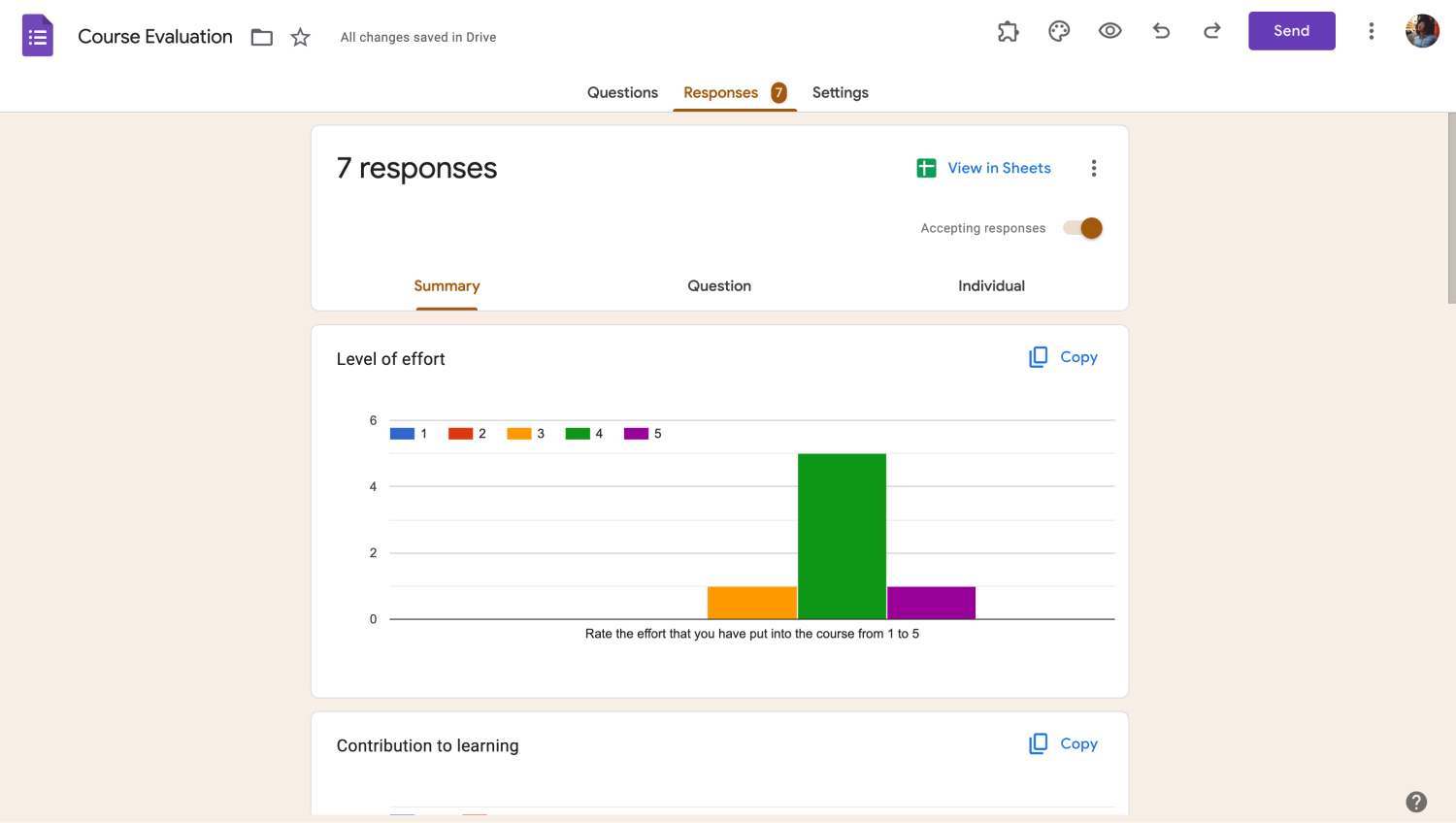
Go to the Responses tab
While some creators may find this satisfactory, if you need a more detailed approach to analyzing your data, you must set up your charts using Google Sheets. To create a pie chart using Google Sheets, you have to follow several simple steps, which we will get to now.
2. Link your form to Google Sheets
The first step of creating a pie chart using Google Sheets is linking your form to Google Sheets. To link your form to Google Sheets, go to the “Responses” tab and click on “View in Sheets.” This action will take you to a menu where you can either create a new spreadsheet or link the results of your form to an existing spreadsheet.
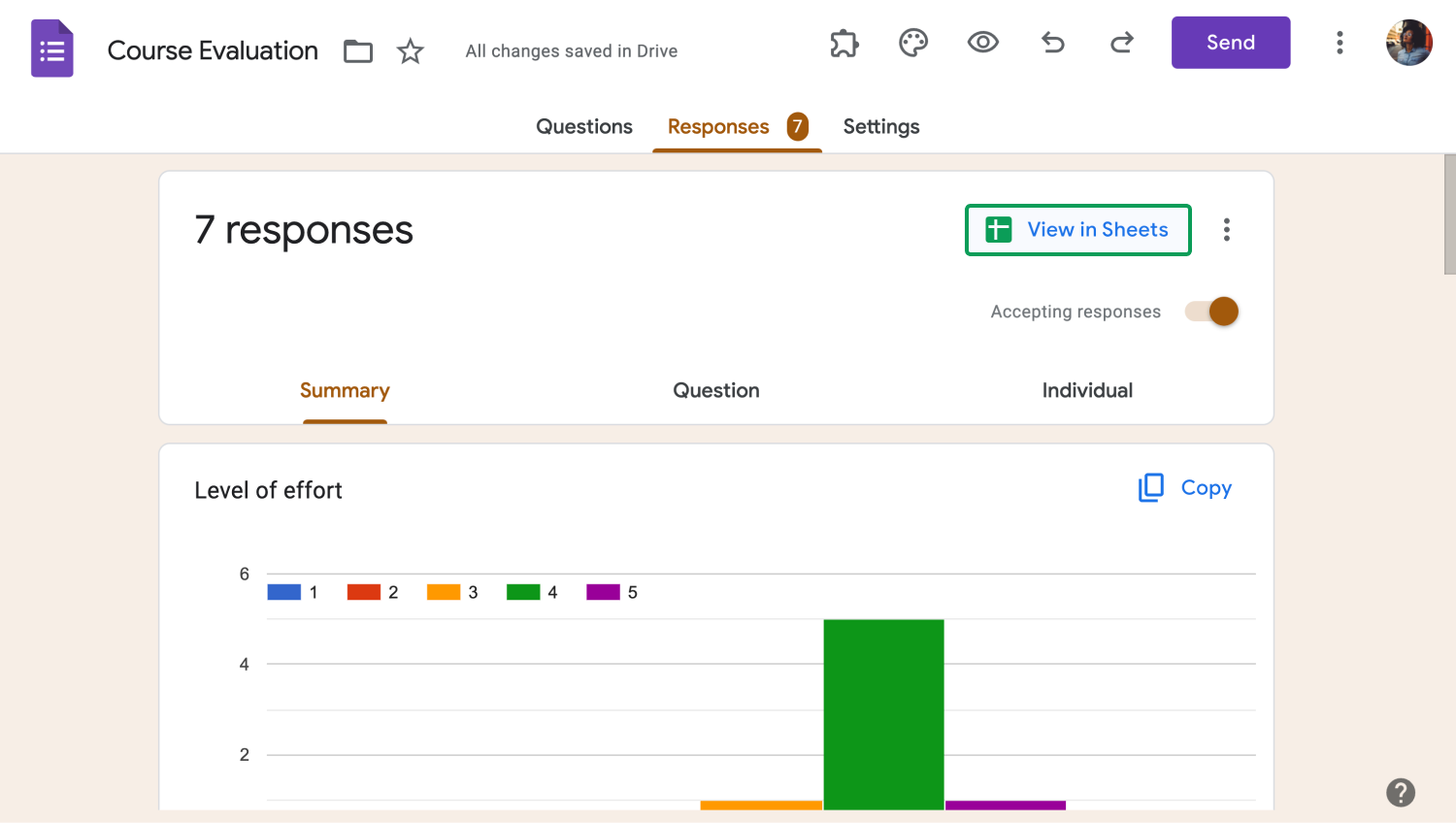
Link your form to Google Sheets
3. Create a pie chart within Google Sheets

Create a pie chart
After you open the spreadsheet to which you have connected your results, you must highlight the cells for which you would like to create charts. Once you have selected the cells, select “Insert” from the upper left side and “Chart” from the dropdown menu. This action will open up a menu from the side and bring a column chart in front of you.
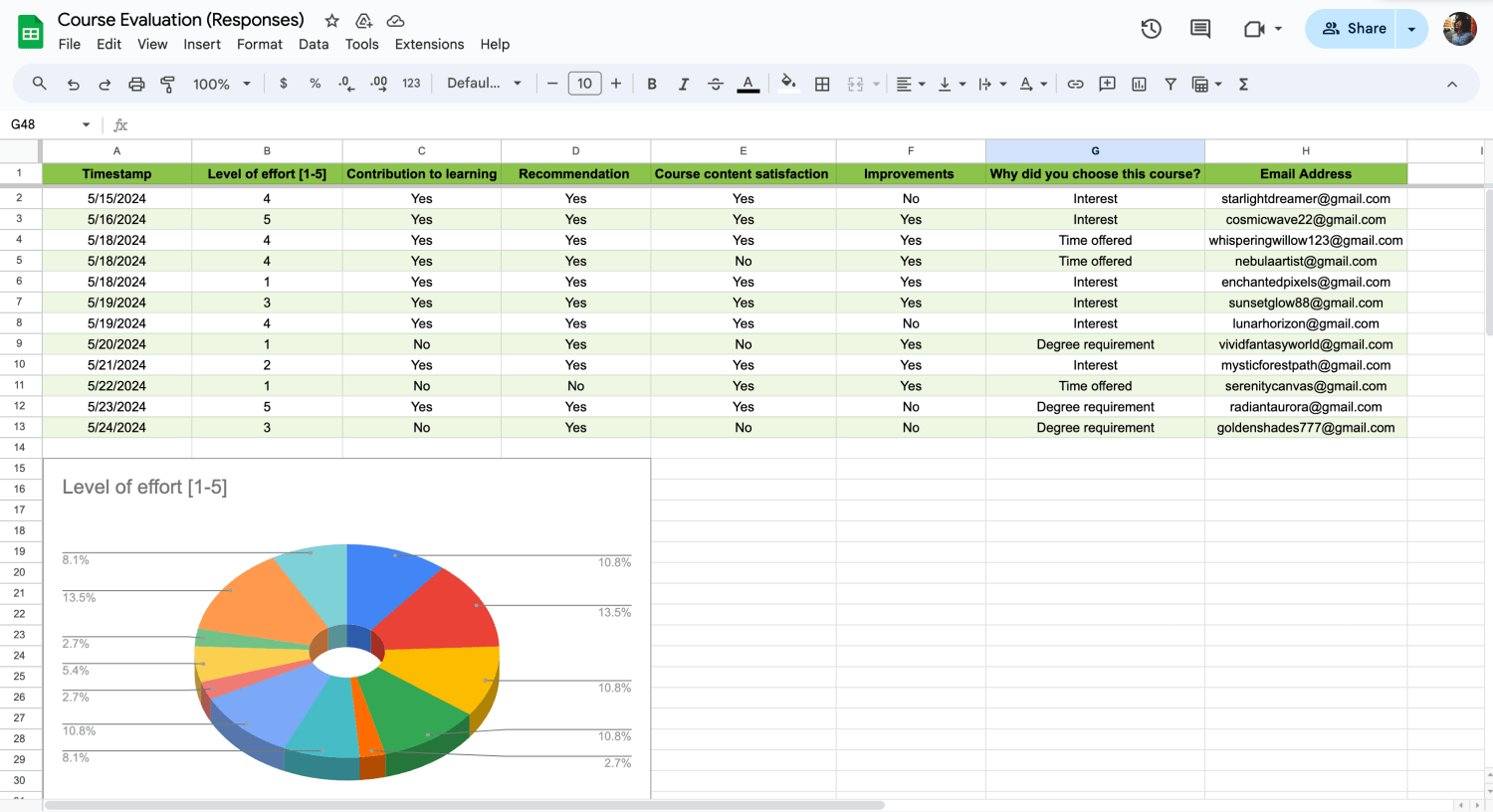
Customize the chart settings
To change the chart type and add a pie chart in your spreadsheet, click on “Column chart” to access the chart editor and scroll down until you see the selection of pie charts. Once you select the chart that you are satisfied with, you can change other settings such as the data range, label, or other settings.

💡If you would like to access additional settings and the setup tab is not enough for you, you can access the “Customize” tab.
forms.app: Statistics
A better and more accessible alternative to the process of integrating your responses and creating charts in Google Sheets is using the “Statistics” tab in forms.app. The statistics tab can be accessed through the “Results” page, and it frees you from the hassle of having to integrate your responses into another platform. You can think of the “Statistics” tab as a mix between Google Forms and Google Sheets.
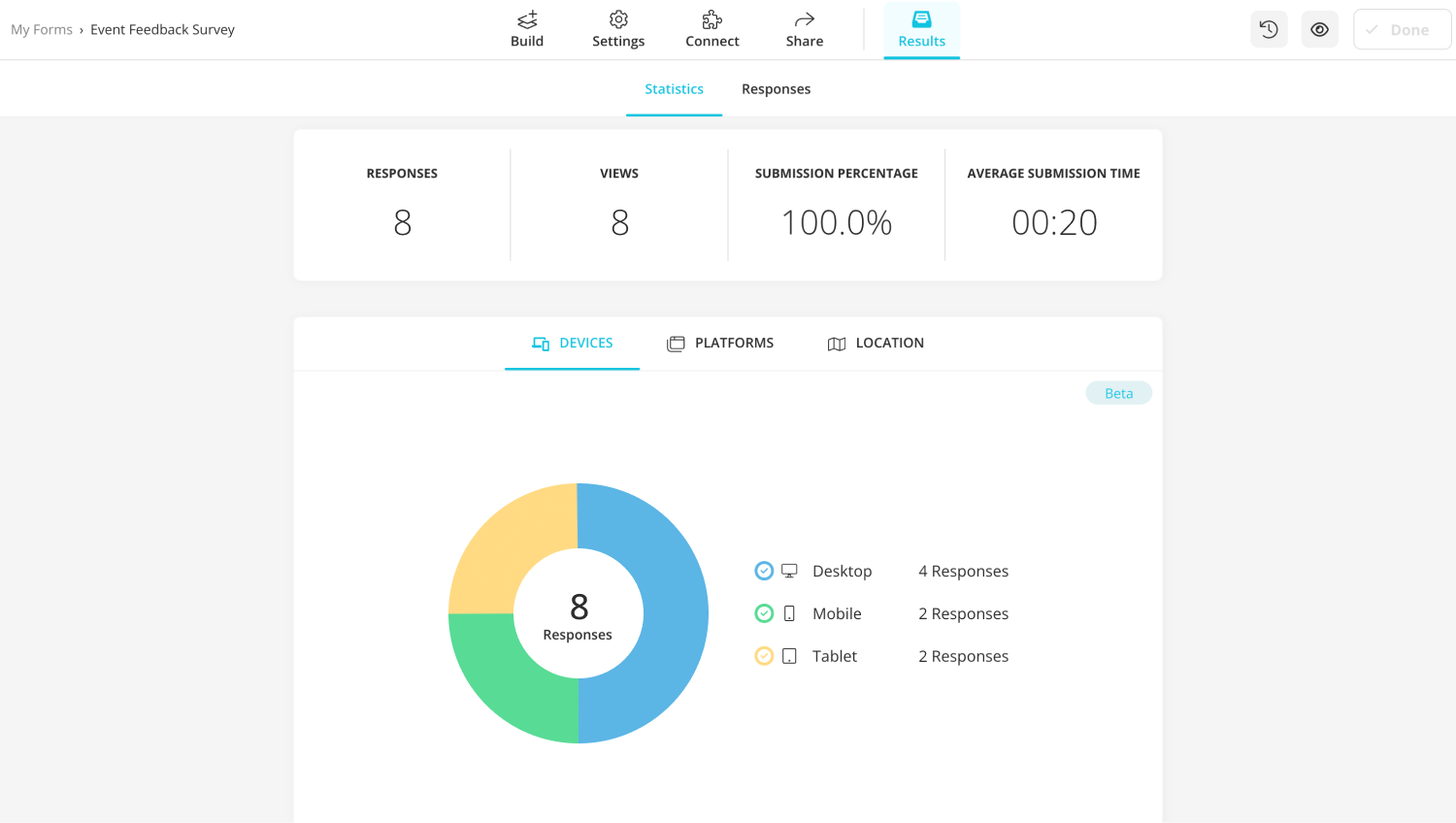
Statistics tab of forms.app
The statistics tab allows you to see how many responses and views your form has gotten and gives you to see the data visually with the help of submission times and submission percentages. Furthermore, you can also see which devices and platforms were used to submit your form, and even see the locations of the people who have submitted.

💡You can also connect your form to Google Sheets and many more databases using the “Connect” page.
Advantages of using graphs in Google Sheets
Using graphs and charts in Google Sheets may not seem like much; you may think that they are just fancy visuals. However, they are the key to understanding the data that you have collected. They are also a great way to present said data. While using graphs and charts in Google Sheets have many more advantages, some of the key points include:
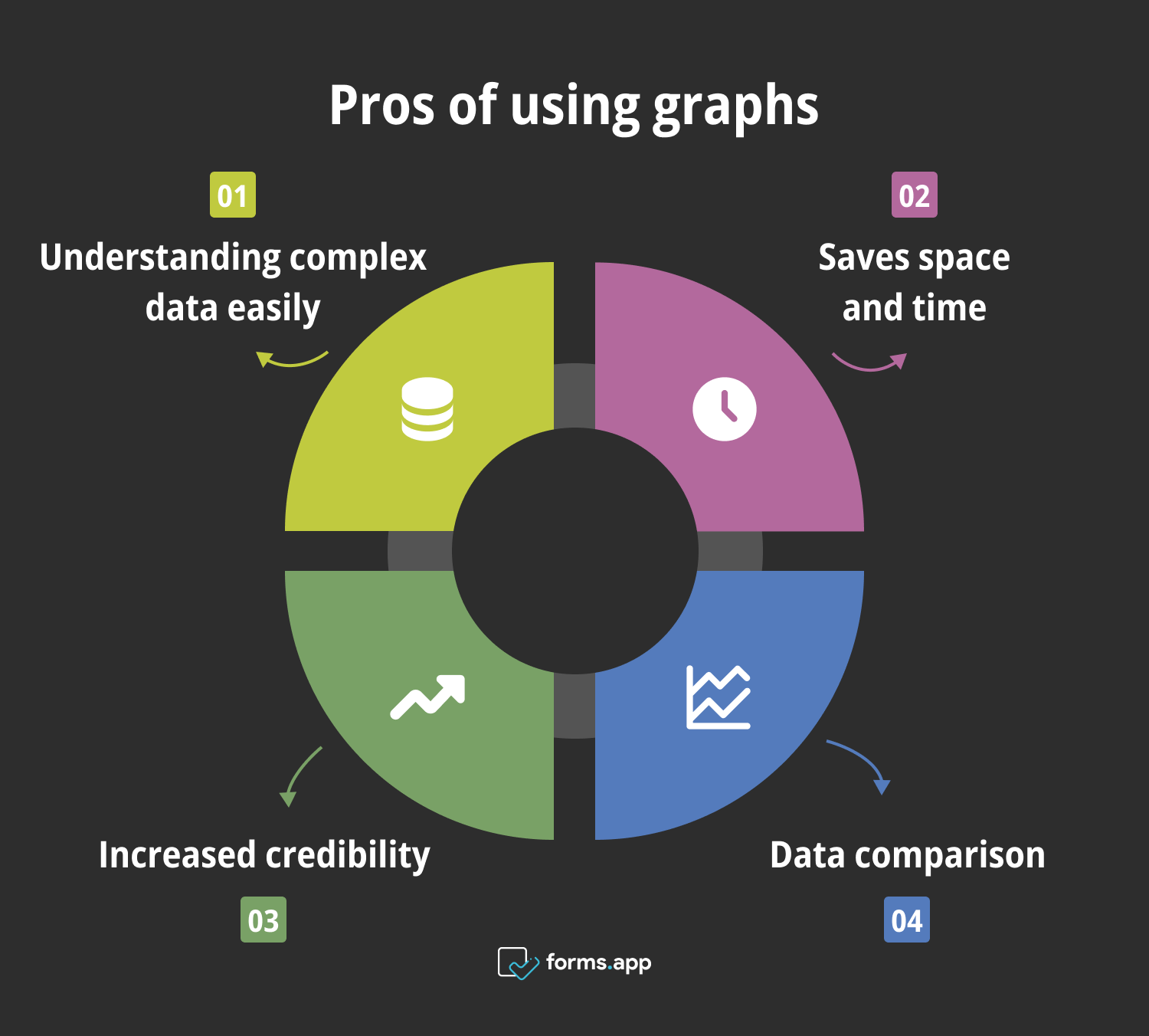
Benefits of using graphs
- Understanding complex data easily: Graphs and charts help you analyze and understand complicated data that you have collected from reports such as a survey report much more easily and present it in a more organized manner.
- Saves space and time: Charts and graphs can also help you save time and resources by conveying a large amount of information in a compact space.
- Increased credibility: Having charts in your spreadsheets also shows that you have done your research and analyzed the data, increasing your credibility and authority.
- Data comparison: Graphs and charts help you compact the data that you have collected, and they also allow you to make comparisons and further analyses faster and without fewer errors.
Frequently asked questions about converting Google Forms answers into pie charts
Now that we have understood the how and why, it is time to learn about the details when it comes to converting Google Forms answers into pie charts by way of frequently asked questions.
Google Forms wandelt Ihre Daten auf der Seite „Antworten“ automatisch in ein Diagramm um. Wenn Sie jedoch ein detaillierteres Diagramm wünschen, empfehlen wir Ihnen, die oben genannten Schritte zur Erstellung eines Diagramms mit Google Sheets auszuführen.
Google Forms stellt Ihnen je nach Fragetyp auf der Registerkarte „Antworten“ ein Balkendiagramm zur Verfügung. Wenn Sie jedoch wissen, wie Sie den Diagrammtyp in Google Forms ändern können, müssen Sie Ihre Daten in Google Sheets übertragen und die gleichen Schritte wie bei der Erstellung eines Tortendiagramms ausführen.
Glücklicherweise visualisiert Google Forms Ihre Daten automatisch auf der Seite „Antworten“. Wenn Sie jedoch eine detailliertere Visualisierung wünschen, empfehlen wir, Google Sheets zu verwenden und ein Diagramm zu erstellen oder forms.app zu verwenden. Sie können auch unseren Artikel über Liniendiagramme in Google Sheets lesen, um mehr über die Visualisierung Ihrer Daten zu erfahren.
Um Ihre Google Sheets-Daten in ein Tortendiagramm zu verwandeln, markieren Sie einfach die Zellen, mit denen Sie ein Diagramm erstellen möchten, klicken Sie auf „Einfügen“ und wählen Sie „Diagramm“ aus dem Dropdown-Menü. Klicken Sie anschließend auf „Säulendiagramm“ und ändern Sie den Diagrammtyp, indem Sie nach unten scrollen, bis Sie die Optionen für das Tortendiagramm sehen.
Final words
In summary, knowing how to analyze your data and present it in a more accessible way requires you to understand how to create a pie chart within Google Forms. Not only does creating a chart or a graph for your data help you save space and time when it comes to the analysis and presentation processes, but it also helps you to make further analyses easier and with fewer errors.
We have discussed how to create a pie chart using Google Forms data, a better and more accessible way of visualizing and analyzing your data with forms.app, and the advantages of using graphs in Google Sheets. We have also answered some of the FAQs about converting Google Forms answers into pie charts. Now it is time for you to create the best charts and graphs you can.
Yakup is a content writer at forms.app. He is also a skilled translator. His hobbies include reading, learning about different languages, and different branches of sports. Yakup's expertise lies in translation, NoCode tools, and Google Forms.



 4 min lesen
4 min lesen
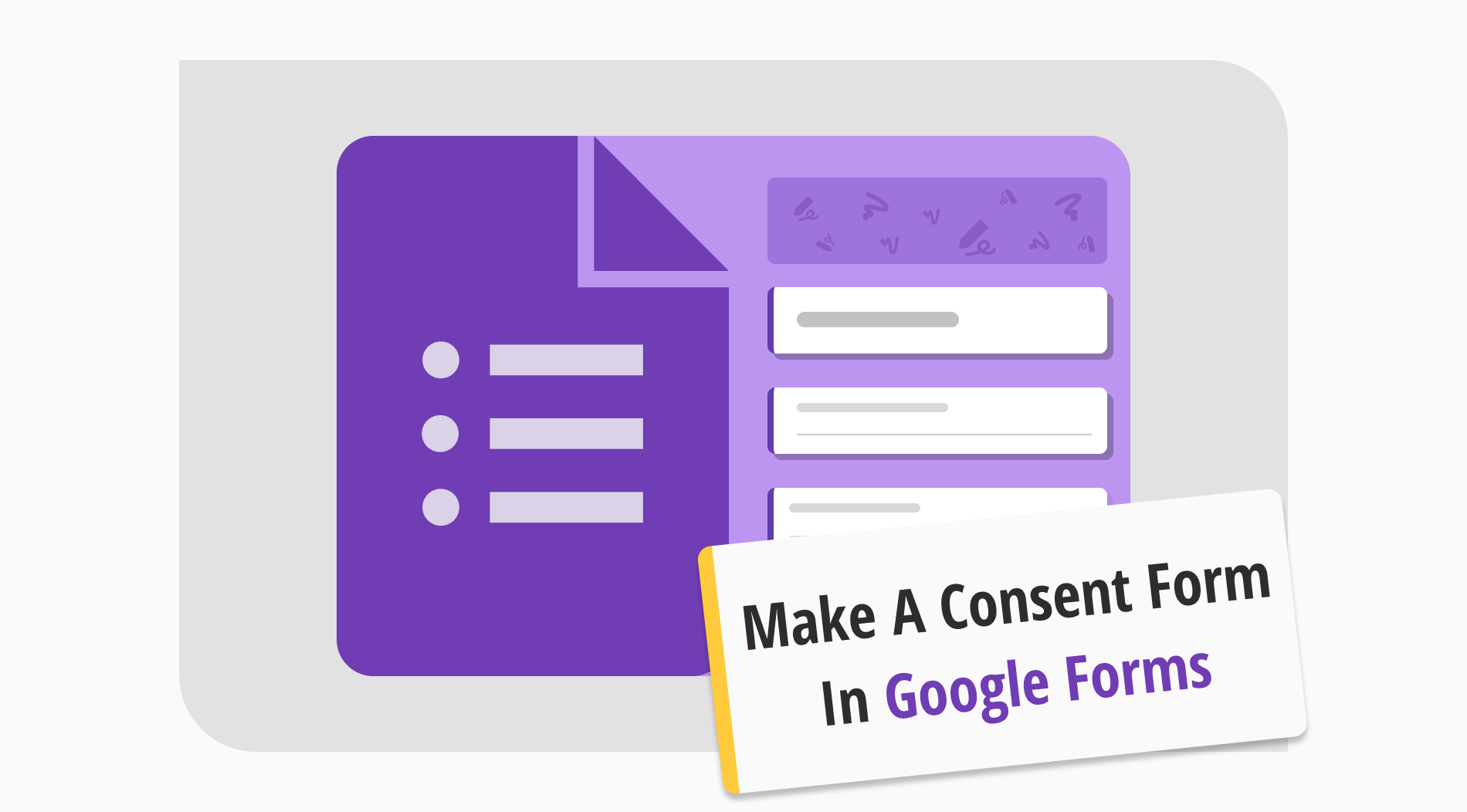
.jpg)